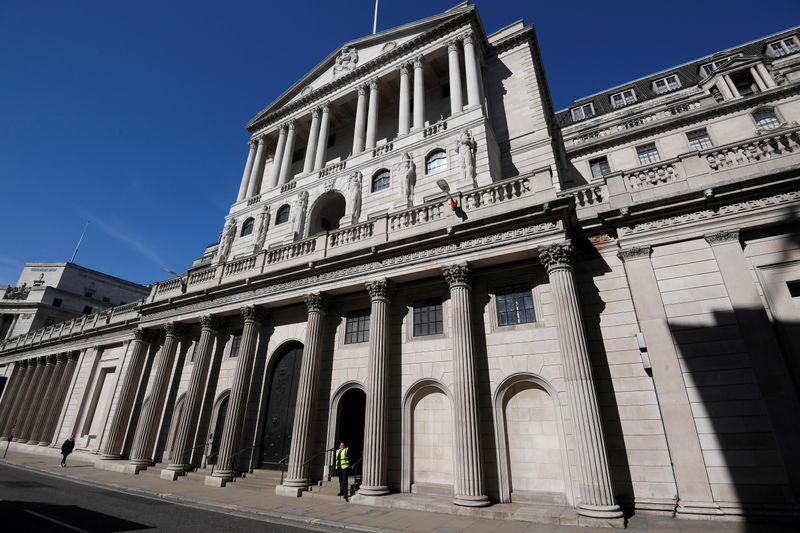Rising inflation puts Bank of England on the spot By Reuters

By William Schomberg
LONDON (Reuters) – The Bank of England will say on Thursday whether it is worried about a recent jump in inflation, which broke above the central bank’s 2% target and looks set to climb higher as Britain reawakens its economy from its coronavirus slumber.
With global policymakers grappling with economic overheating risks against the backdrop of huge stimulus programmes, Governor Andrew Bailey and other BoE officials have mostly said Britain’s faster price growth is likely to prove transitory.
But last week, the U.S. Federal Reserve began to move towards reducing its pandemic stimulus by signalling its first rate hike in 2023, a year earlier than previous projections, putting the focus on what other central banks might now do.
The BoE is expected to leave its benchmark rate at an all-time low of 0.1% and press on with its 895 billion-pound ($1.25 trillion) bond-buying programme when it announces its June policy decision at 1100 GMT.
But investors are watching to see if any other Monetary Policy Committee members join Chief Economist Andy Haldane who is likely to vote again to scale back the bond-buying programme at his final meeting before leaving the BoE.
With the world’s fifth-largest economy bouncing back sharply from its near 10% plunge last year, Haldane has said the British central bank is facing its most dangerous policy challenge in almost 30 years.
Consumer price inflation jumped to 2.1% in May, a long way below the U.S. rate of 5% but surpassing the BoE’s 2% target level sooner than the central bank had forecast.
Last month, it projected that CPI would hit 2.5% in late 2021 before easing back to 2%. But some economists are now pencilling in a peak of just over 3%.
On Wednesday, a survey of businesses showed cost pressures at their highest levels since the 1990s.
Hugh Gimber, global market strategist at J.P. Morgan Asset Management, said some MPC members other than Haldane might feel that the time to act was approaching.
“Last week the Fed took its first step in guiding investors towards less easy policy ahead. The Bank of England may not be far behind,” Gimber said.
Interest rate futures on Wednesday priced in a rise in Bank Rate to 0.25% from its current 0.1% by the summer of 2022.
RISKS REMAIN
While Bailey and other MPC colleagues say they are watching inflation closely, they also worry about a possible rise in unemployment when the government asks employers to contribute to the cost of keeping on furloughed workers from July 1.
The furlough scheme is due to end altogether at the end of September.
Evercore, a consultancy, said the BoE’s assumptions for how many furloughed workers were likely to go back to their old jobs looked too optimistic, meaning it was expecting a first Bank Rate hike only in late 2022.
“But if the furlough phase-out goes better than we anticipate, the Bank could certainly be hiking as early as May 2022,” it said in a note to clients.
The BoE must also monitor a new rise in COVID-19 cases in Britain which on Wednesday hit their highest since February. A planned easing of social-distancing rules due this week was delayed by a month as the government delivers more vaccines to younger people.
($1 = 0.7164 pounds)

